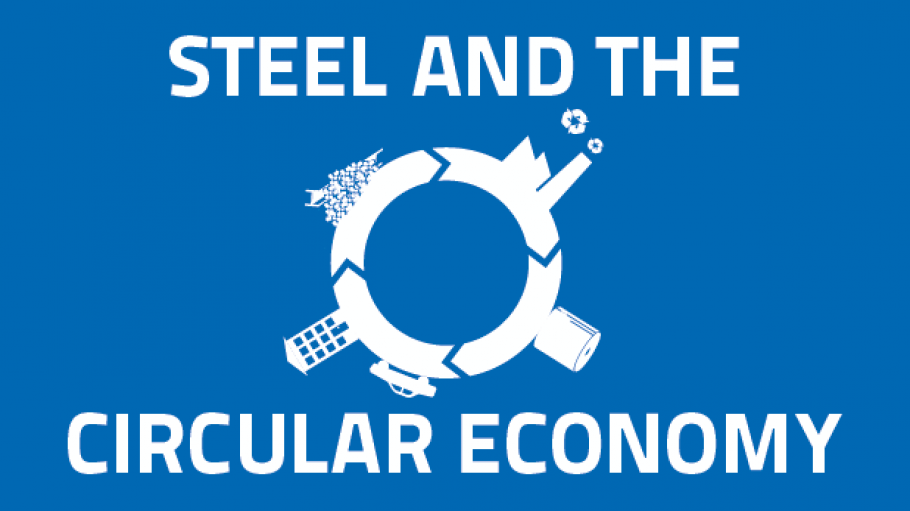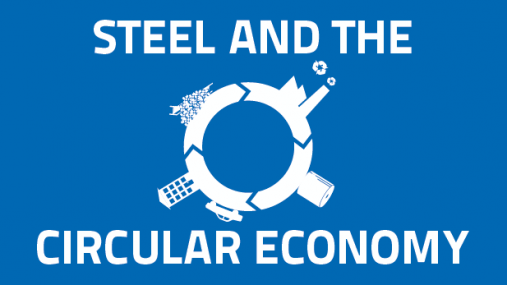
Publications » Brochures, booklets or fact-sheets » Steel and the circular economy
Steel and the circular economy
Downloads and links
Recent updates

Shaping the circular economy is an ongoing challenge. Achieving this objective is not possible without steel. The European Commission is expected to publish a package with proposals on the Circular Economy towards the end of 2015. This package will explain how the EU intends to deal with the need to transform Europe into a more competitive resource-efficient economy, addressing a range of issues, including reuse, recycling, and waste treatment.
Steel is a 100% recyclable, ‘permanent’ material, which loses none of its unique properties when properly processed. The European steel industry works hard to ensure that the steel it produces can be reused, recovered, and recycled. It also ensures that steel production’s by-products, such as slags and process, gases are put to the best possible uses.
The brochure provides recommendations to policy makers dealing with issues arising in the circular economy for the steel industry. It shows that steel can help mitigate CO2 emissions and help reduce product lifecycle emissions. Steel’s characteristic as a ‘permanent’ material means it can be easily reused and subsequently recycled in a constant loop.
To this end, the brochure proposes that the recycling definition in the EU’s waste legislation be adapted to properly meet the aspirations of the circular economy. Finally, it demonstrates the large degree to which steel production retains as much of the material created during steel production and is able to make use of its by-products.
As part of its commitment to underpinning the circular economy, the steel industry is constantly working on cleaner, resource-efficient solutions – as well as on an ever-expanding range of steel grades – ensuring that the average 170 million tonnes of steel it produces every year are ever more sustainable, useful and environmentally friendly.

Download this publication or visit associated links
Brussels, 22 March 2024 – The future of a strong and resilient EU can only be forged with steel made in Europe. Europe-made low-carbon steel has a strategic role as it enables a net-zero economy, but today it faces strong headwinds from high energy prices, unfair competition, global overcapacity and growing unilateral carbon costs. The year 2023 has recorded the lowest European crude steel production levels ever, with a number of idled plants and dire impact on workers. Ensuring the enabling conditions for the short-term viability and the decarbonisation of the steel sector urgently needs to be at the top of the EU agenda. This is the message delivered by the European Steel Association together with a number of high-level representatives of the sector on the occasion of the Clean Transition Dialogue on Steel in the presence of the Executive Vice Presidents of the European Commission, Maroš Šefčovič and Margrethe Vestager.
Uses, limits, and realistic potentials of demand-side response from the European steel industry along with a broad set of framework recommendations for an EU policy
Antwerp, 20 February 2024 – Today 73 industry leaders spanning almost 20 industrial sectors presented ‘The Antwerp Declaration for a European Industrial Deal’ to Belgian Prime Minister, Alexander De Croo and Commission President, Ursula von der Leyen. The declaration underlines the commitment of industry to Europe and its transformation and outlines urgent industry needs to make Europe competitive, resilient, and sustainable in the face of dire economic conditions.